Resilience Measurement of Bus–Subway Network Based on Generalized Cost
Abstract
1. Introduction
2. Construction of Weighted Composite Network
2.1. Construction of Unweighted Composite Network
2.2. Generalized Cost-Weighting Method
3. Bus–Subway Weighted Network Characteristics
3.1. Node Importance Indicators
3.2. Identification of Critical Nodes
4. Resilience Measurement Model
5. Results and Discussion
6. Conclusions
- (1)
- The importance of the nodes under the different evaluation indicators present different spatial distributions. The reachability and weighted coreness distribution of the nodes demonstrate central agglomeration, and their importance decreases from the urban center to the periphery. Conversely, in terms of the path importance distribution of the nodes, the nodes of high importance are staggered with nodes of low importance, lacking a discernible aggregation feature. These indicators reflect the characteristics of the nodes from different focuses, providing a basis for comprehensively identifying the critical nodes in the network.
- (2)
- There are distinct differences in the nodes with strong centrality identified by the different evaluation indicators. The top-20 nodes for the three indicators of reachability, path importance, and weighted coreness have only three nodes in common. Even so, except for 188, 85, and 316, the top-20 critical nodes identified according to the improved CRITIC-TOPSIS method are all the top 20 nodes for the other importance indicators. This indicates that the identified critical nodes also have strong importance, which also illustrates the effectiveness of the critical nodes identification method used in this study.
- (3)
- During the attack process, the network connectivity coefficient is most sensitive to attacks on the path importance sequence. When the first 10% of the nodes in this sequence are removed, the network connectivity coefficient declines the most rapidly, decreasing by 42.3%. And the global accessibility is most sensitive to attacks on the critical nodes sequence. When the top 20% of the nodes in this sequence are removed, the network is on the verge of failure. During the recovery process, both the network connectivity coefficient and global accessibility recover most effectively when following the critical nodes sequence. When the first 70% of the nodes are restored, the network is nearly fully recovered. This study provides a crucial reference for allocating support resources within public transportation systems prior to a disaster and for developing recovery strategies post-disaster.
- (4)
- The overall performance of the bus–subway composite network surpasses that of the single bus network. The maximum connected subgraph and weighted network efficiency of the initial network are increased by 3.56% and 5.26%, respectively. Additionally, after undergoing attack and recovery, the resilience of the bus–subway composite network remains higher than that of the single bus network. However, the improvement is not obvious, with the maximum increase being only 3.53%.
Author Contributions
Funding
Data Availability Statement
Acknowledgments
Conflicts of Interest
References
- Dong, S.; Mostafizi, A.; Wang, H.; Gao, J.; Li, X. Measuring the Topological Robustness of Transportation Networks to Disaster-Induced Failures: A Percolation Approach. J. Infrastruct. Syst. 2020, 26, 04020009. [Google Scholar] [CrossRef]
- Oehlers, M.; Fabian, B. Graph Metrics for Network Robustness—A Survey. Mathematics 2021, 9, 895. [Google Scholar] [CrossRef]
- Abdelaty, H.; Mohamed, M.; Ezzeldin, M.; El-Dakhakhni, W. Quantifying and Classifying the Robustness of Bus Transit Networks. Transp. A Transp. Sci. 2020, 16, 1176–1216. [Google Scholar] [CrossRef]
- Zhang, Y.; Ng, S.T. Robustness of Urban Railway Networks against the Cascading Failures Induced by the Fluctuation of Passenger Flow. Reliab. Eng. Syst. Saf. 2022, 219, 108227. [Google Scholar] [CrossRef]
- Abdelaty, H.; Mohamed, M.; Ezzeldin, M.; El-Dakhakhni, W. Temporal Robustness Assessment Framework for City-Scale Bus Transit Networks. Phys. Stat. Mech. Appl. 2022, 606, 128077. [Google Scholar] [CrossRef]
- Jiang, J.; Wu, L.; Yu, J.; Wang, M.; Kong, H.; Zhang, Z.; Wang, J. Robustness of Bilayer Railway-Aviation Transportation Network Considering Discrete Cross-Layer Traffic Flow Assignment. Transp. Res. Part D Transp. Environ. 2024, 127, 104071. [Google Scholar] [CrossRef]
- El-Rashidy, R.A.; Grant-Muller, S.M. An Assessment Method for Highway Network Vulnerability. J. Transp. Geogr. 2014, 34, 34–43. [Google Scholar] [CrossRef]
- Shen, Y.; Yang, H.; Ren, G.; Ran, B. Model Cascading Overload Failure and Dynamic Vulnerability Analysis of Facility Network of Metro Station. Reliab. Eng. Syst. Saf. 2024, 242, 109711. [Google Scholar] [CrossRef]
- Zhang, J.; Wang, S.; Wang, X. Comparison Analysis on Vulnerability of Metro Networks Based on Complex Network. Phys. Stat. Mech. Appl. 2018, 496, 72–78. [Google Scholar] [CrossRef]
- Sun, Y.; Xie, B.; Wang, S.; Wu, D. Dynamic Assessment of Road Network Vulnerability Based on Cell Transmission Model. J. Adv. Transp. 2021, 2021, 5575537. [Google Scholar] [CrossRef]
- Wang, Y.; Wang, L.; Liu, Z. Vulnerability Metrics of Multimodal Composite Transportation Network. J. Traffic Transp. Eng. 2023, 23, 195–207. [Google Scholar]
- Gu, Y.; Fu, X.; Liu, Z.; Xu, X.; Chen, A. Performance of Transportation Network under Perturbations: Reliability, Vulnerability, and Resilience. Transp. Res. Part E Logist. Transp. Rev. 2020, 133, 101809. [Google Scholar] [CrossRef]
- Zhang, J.; Ren, G.; Song, J. Resilience-Based Restoration Sequence Optimization for Metro Networks: A Case Study in China. J. Adv. Transp. 2022, 2022, 8595356. [Google Scholar] [CrossRef]
- D’Lima, M.; Medda, F. A New Measure of Resilience: An Application to the London Underground. Transp. Res. Part A Policy Pract. 2015, 81, 35–46. [Google Scholar] [CrossRef]
- Dong, S.; Gao, X.; Mostafavi, A.; Gao, J.; Gangwal, U. Characterizing Resilience of Flood-Disrupted Dynamic Transportation Network through the Lens of Link Reliability and Stability. Reliab. Eng. Syst. Saf. 2023, 232, 109071. [Google Scholar] [CrossRef]
- Testa, A.C.; Furtado, M.N.; Alipour, A. Resilience of Coastal Transportation Networks Faced with Extreme Climatic Events. Transp. Res. Rec. 2015, 2532, 29–36. [Google Scholar] [CrossRef]
- Zhang, D.; Du, F.; Huang, H.; Zhang, F.; Ayyub, B.M.; Beer, M. Resiliency Assessment of Urban Rail Transit Networks: Shanghai Metro as an Example. Saf. Sci. 2018, 106, 230–243. [Google Scholar] [CrossRef]
- Aydin, N.Y.; Duzgun, H.S.; Wenzel, F.; Heinimann, H.R. Integration of Stress Testing with Graph Theory to Assess the Resilience of Urban Road Networks under Seismic Hazards. Nat. Hazards 2018, 91, 37–68. [Google Scholar] [CrossRef]
- Yin, K.; Wu, J.; Wang, W.; Lee, D.-H.; Wei, Y. An Integrated Resilience Assessment Model of Urban Transportation Network: A Case Study of 40 Cities in China. Transp. Res. Part A Policy Pract. 2023, 173, 103687. [Google Scholar] [CrossRef]
- Elmezain, M.; Othman, E.A.; Ibrahim, H.M. Temporal Degree-Degree and Closeness-Closeness: A New Centrality Metrics for Social Network Analysis. Mathematics 2021, 9, 2850. [Google Scholar] [CrossRef]
- Huang, L.; Huang, H.; Wang, Y. Resilience Analysis of Traffic Network under Emergencies: A Case Study of Bus Transit Network. Appl. Sci. 2023, 13, 8835. [Google Scholar] [CrossRef]
- Koopmans, C.; Groot, W.; Warffemius, P.; Annema, J.A.; Hoogendoorn-Lanser, S. Measuring Generalised Transport Costs as an Indicator of Accessibility Changes over Time. Transp. Policy 2013, 29, 154–159. [Google Scholar] [CrossRef]
- Santos, T.A.; Martins, P.; Soares, C.G. The Impact of Container Terminal Relocation on Hinterland Geography. J. Transp. Geogr. 2021, 92, 103014. [Google Scholar] [CrossRef]
- Tian, Z.; Sun, G.; Chen, D.; Qiu, Z.; Ma, Y. Method for Determining the Valid Travel Route of Railways Based on Generalised Cost under the Syncretic Railway Network. J. Adv. Transp. 2020, 2020, 8287648. [Google Scholar] [CrossRef]
- Super Transportation Network Demand and Forecast Technology Based on Multi-Mode Generalized Cost Model (Topic)—1—All Databases. Available online: https://webofscience.clarivate.cn/wos/alldb/summary/d9f51be7-6d3c-41cd-aa5d-425afbf1e114-f1dc01a8/relevance/1 (accessed on 6 June 2024).
- Xu, L.; Su, F.; Zhang, J.; Zhang, N. High-Speed Rail Network Structural Characteristics and Evolution in China. Mathematics 2022, 10, 3318. [Google Scholar] [CrossRef]
- Jun, M.-J.; Choi, K.; Jeong, J.-E.; Kwon, K.-H.; Kim, H.-J. Land Use Characteristics of Subway Catchment Areas and Their Influence on Subway Ridership in Seoul. J. Transp. Geogr. 2015, 48, 30–40. [Google Scholar] [CrossRef]
- Chen, C.; Wang, S.; Zhang, J.; Gu, X. Modeling the Vulnerability and Resilience of Interdependent Transportation Networks under Multiple Disruptions. J. Infrastruct. Syst. 2023, 29, 04022043. [Google Scholar] [CrossRef]
- Cao, Q.; Deng, Y.; Ren, G.; Liu, Y.; Li, D.; Song, Y.; Qu, X. Jointly Estimating the Most Likely Driving Paths and Destination Locations with Incomplete Vehicular Trajectory Data. Transp. Res. Part C Emerg. Technol. 2023, 155, 104283. [Google Scholar] [CrossRef]
- Ma, F.; Ao, Y.; Wang, X.; He, H.; Liu, Q.; Yang, D.; Gou, H. Assessing and Enhancing Urban Road Network Resilience under Rainstorm Waterlogging Disasters. Transp. Res. Part D Transp. Environ. 2023, 123, 103928. [Google Scholar] [CrossRef]
- Shen, J.; Zong, H. Identification of Critical Transportation Cities in the Multimodal Transportation Network of China. Phys. Stat. Mech. Appl. 2023, 628, 129174. [Google Scholar] [CrossRef]
- Kitsak, M.; Gallos, L.K.; Havlin, S.; Liljeros, F.; Muchnik, L.; Stanley, H.E.; Makse, H.A. Identification of Influential Spreaders in Complex Networks. Nat. Phys. 2010, 6, 888–893. [Google Scholar] [CrossRef]
- Lue, L.; Zhou, T.; Zhang, Q.-M.; Stanley, H.E. The H-Index of a Network Node and Its Relation to Degree and Coreness. Nat. Commun. 2016, 7, 10168. [Google Scholar] [CrossRef] [PubMed]
- Bae, J.; Kim, S. Identifying and Ranking Influential Spreaders in Complex Networks by Neighborhood Coreness. Phys. Stat. Mech. Appl. 2014, 395, 549–559. [Google Scholar] [CrossRef]
- Han, S.; Wang, B.; Ao, Y.; Bahmani, H.; Chai, B. The Coupling and Coordination Degree of Urban Resilience System: A Case Study of the Chengdu-Chongqing Urban Agglomeration. Environ. Impact Assess. Rev. 2023, 101, 107145. [Google Scholar] [CrossRef]
- Rezaei, J. Best-Worst Multi-Criteria Decision-Making Method: Some Properties and a Linear Model. Omega Int. J. Manag. Sci. 2016, 64, 126–130. [Google Scholar] [CrossRef]
- Akram, M.; Dudek, W.A.; Ilyas, F. Group Decision-Making Based on Pythagorean Fuzzy TOPSIS Method. Int. J. Intell. Syst. 2019, 34, 1455–1475. [Google Scholar] [CrossRef]
- Huang, S.-W.; Liou, J.J.H.; Chuang, H.-H.; Tzeng, G.-H. Using a Modified VIKOR Technique for Evaluating and Improving the National Healthcare System Quality. Mathematics 2021, 9, 1349. [Google Scholar] [CrossRef]
- Rao, C.; Gao, Y. Evaluation Mechanism Design for the Development Level of Urban-Rural Integration Based on an Improved TOPSIS Method. Mathematics 2022, 10, 380. [Google Scholar] [CrossRef]
- Zhu, J.-X.; Luo, Q.-Y.; Guan, X.-Y.; Yang, J.-L.; Bing, X. A Traffic Assignment Approach for Multi-Modal Transportation Networks Considering Capacity Constraints and Route Correlations. IEEE Access 2020, 8, 158862–158874. [Google Scholar] [CrossRef]
- Lin, H.; Tang, C. Analysis and Optimization of Urban Public Transport Lines Based on Multiobjective Adaptive Particle Swarm Optimization. IEEE Trans. Intell. Transp. Syst. 2022, 23, 16786–16798. [Google Scholar] [CrossRef]
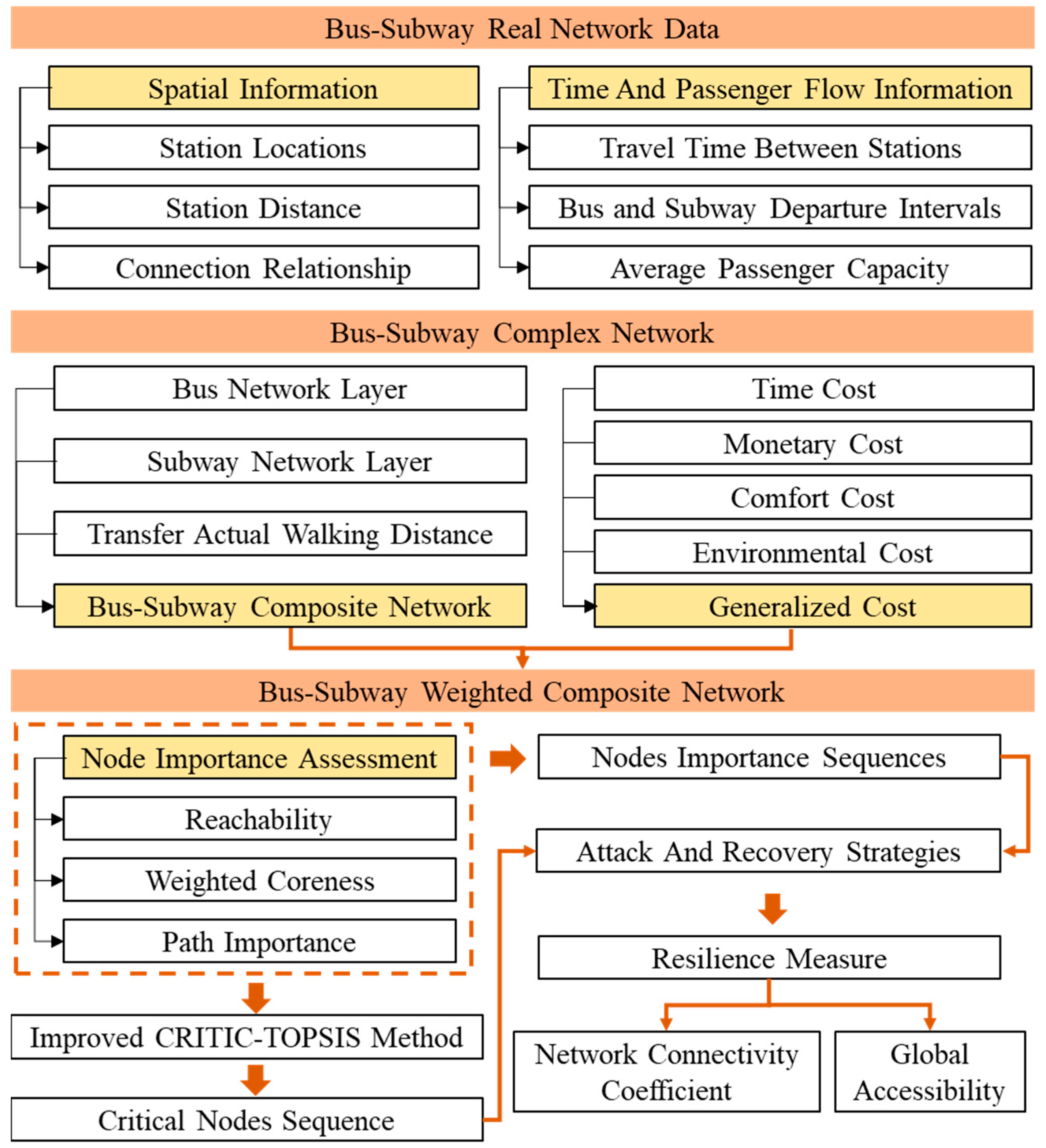


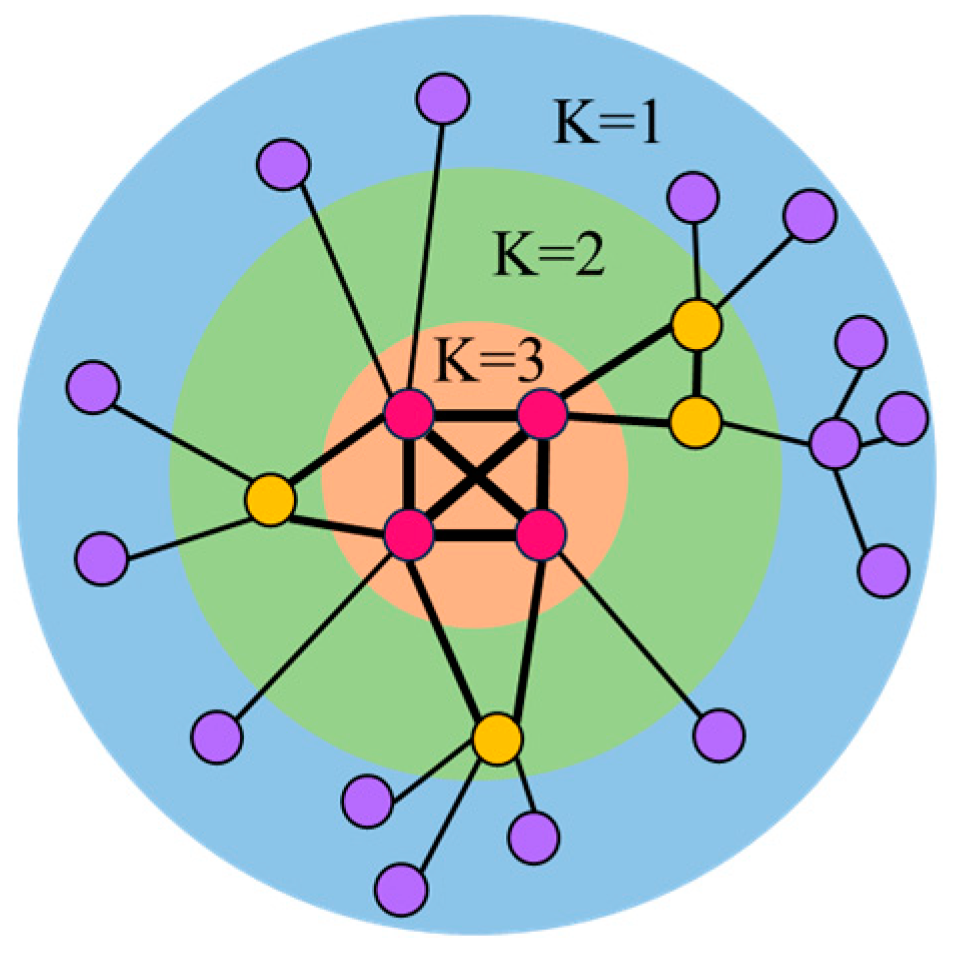
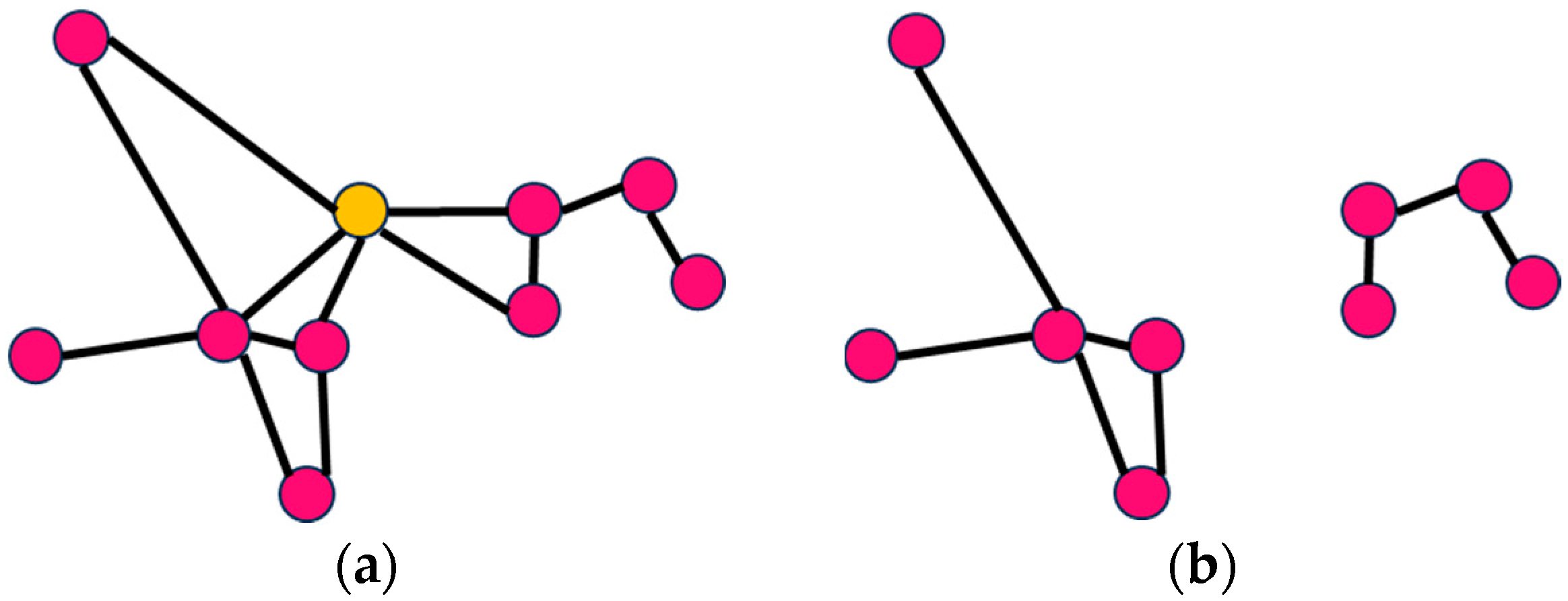

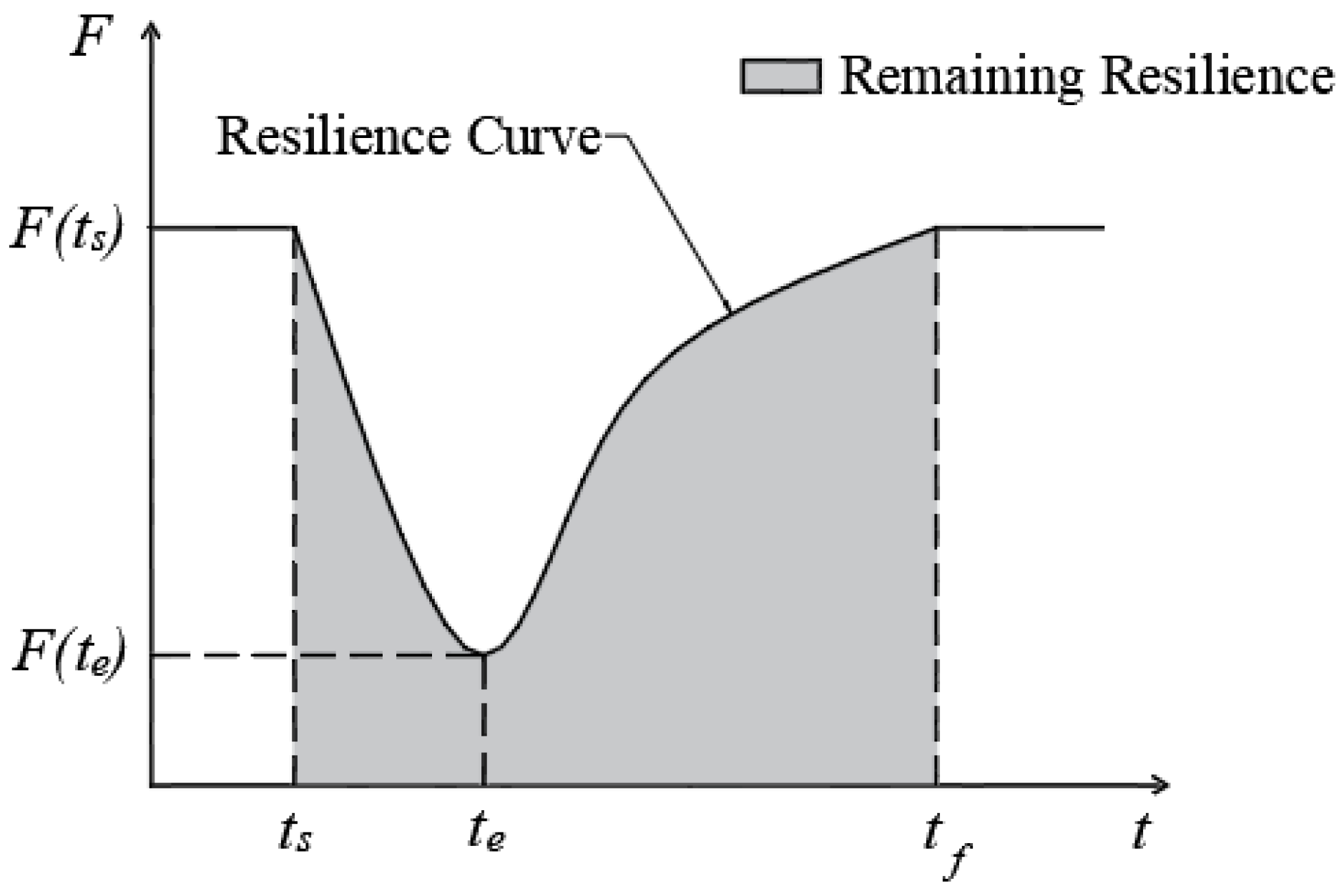
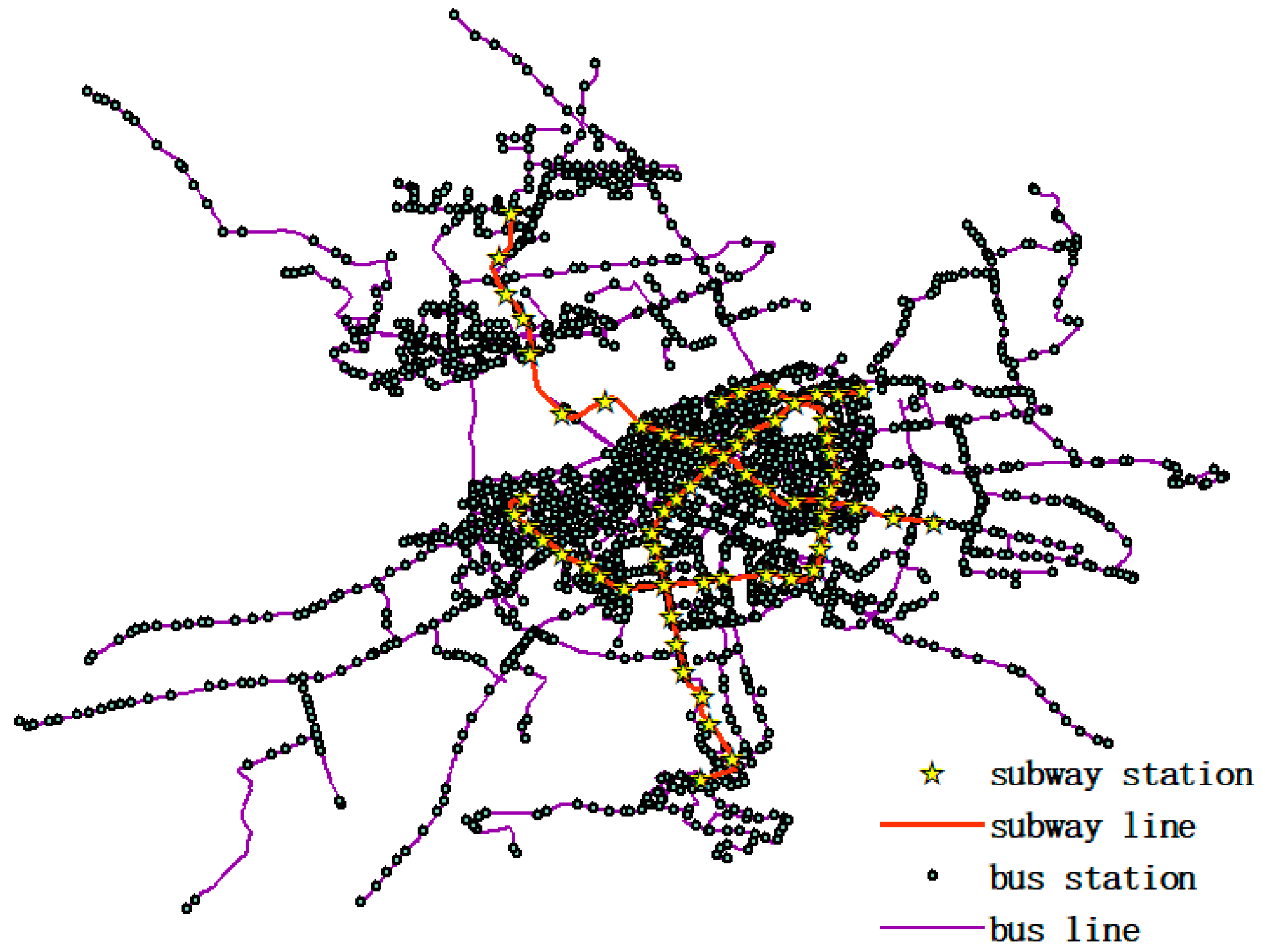

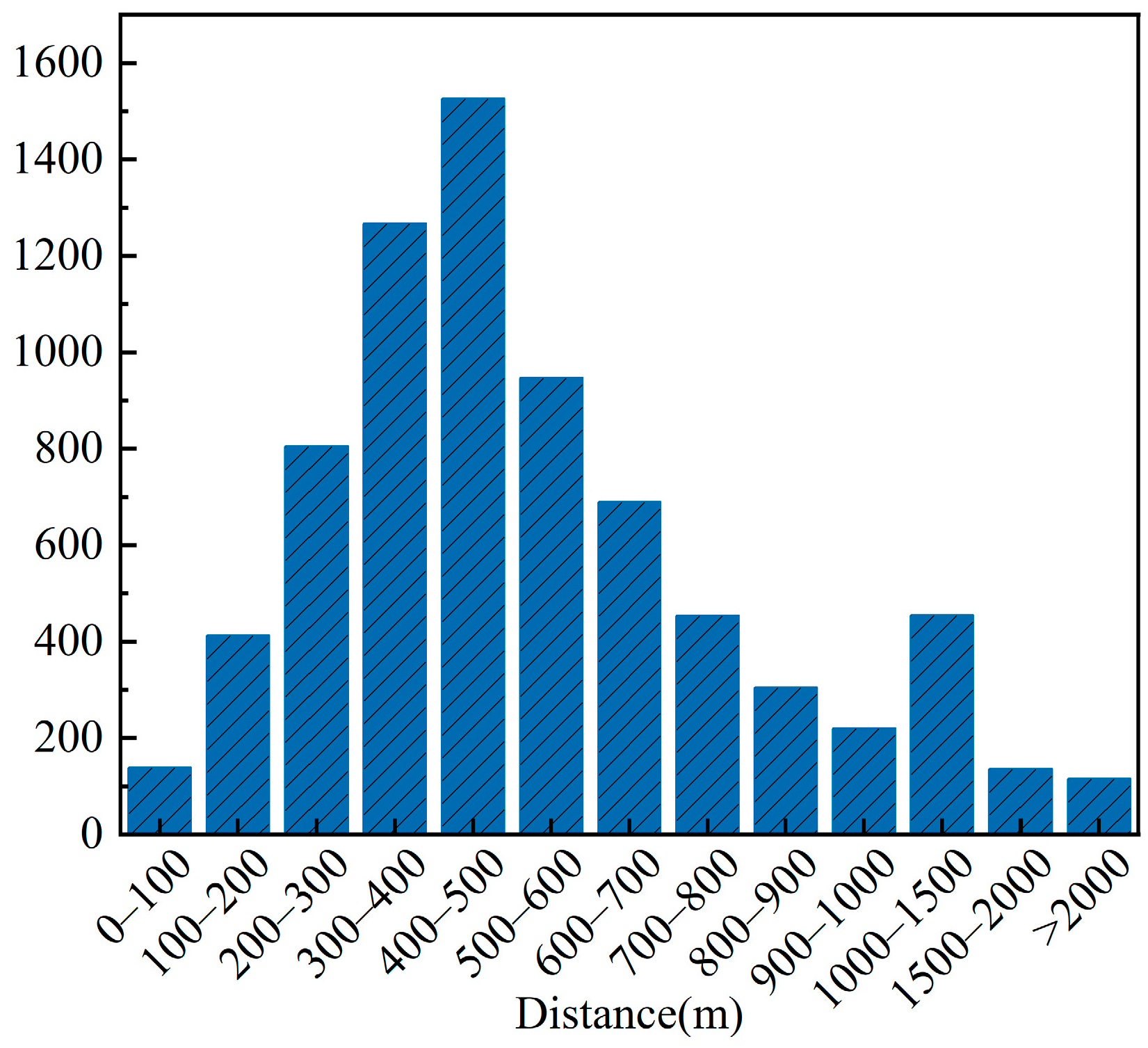
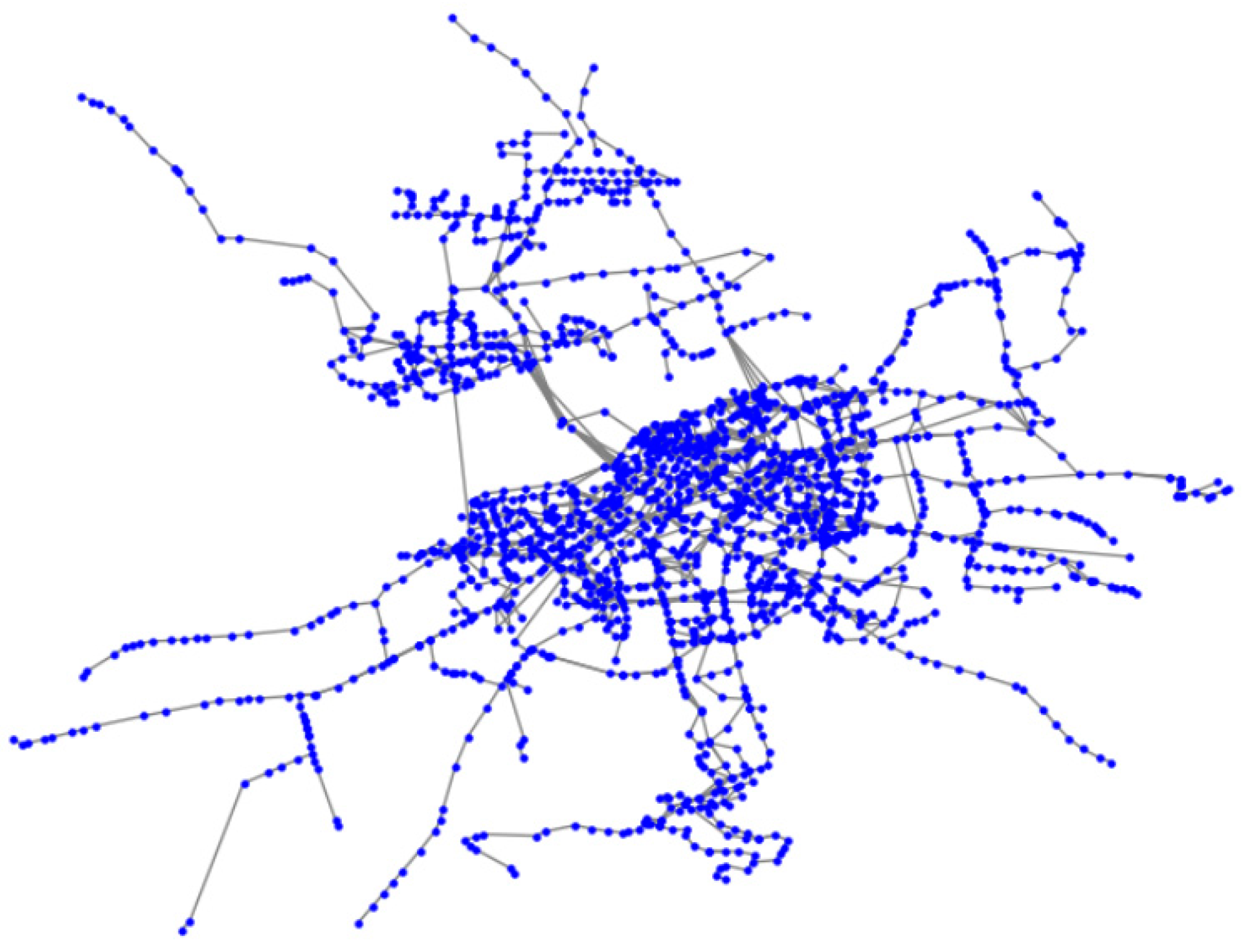
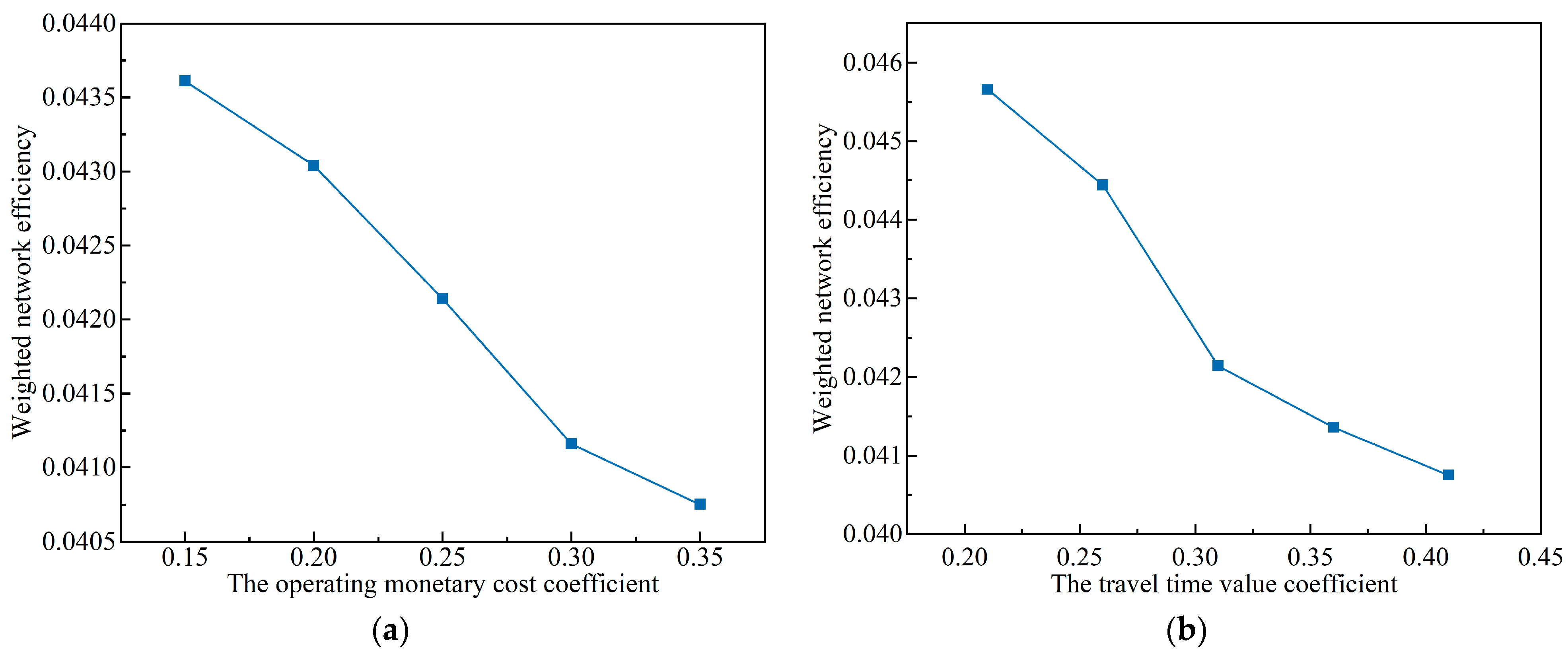
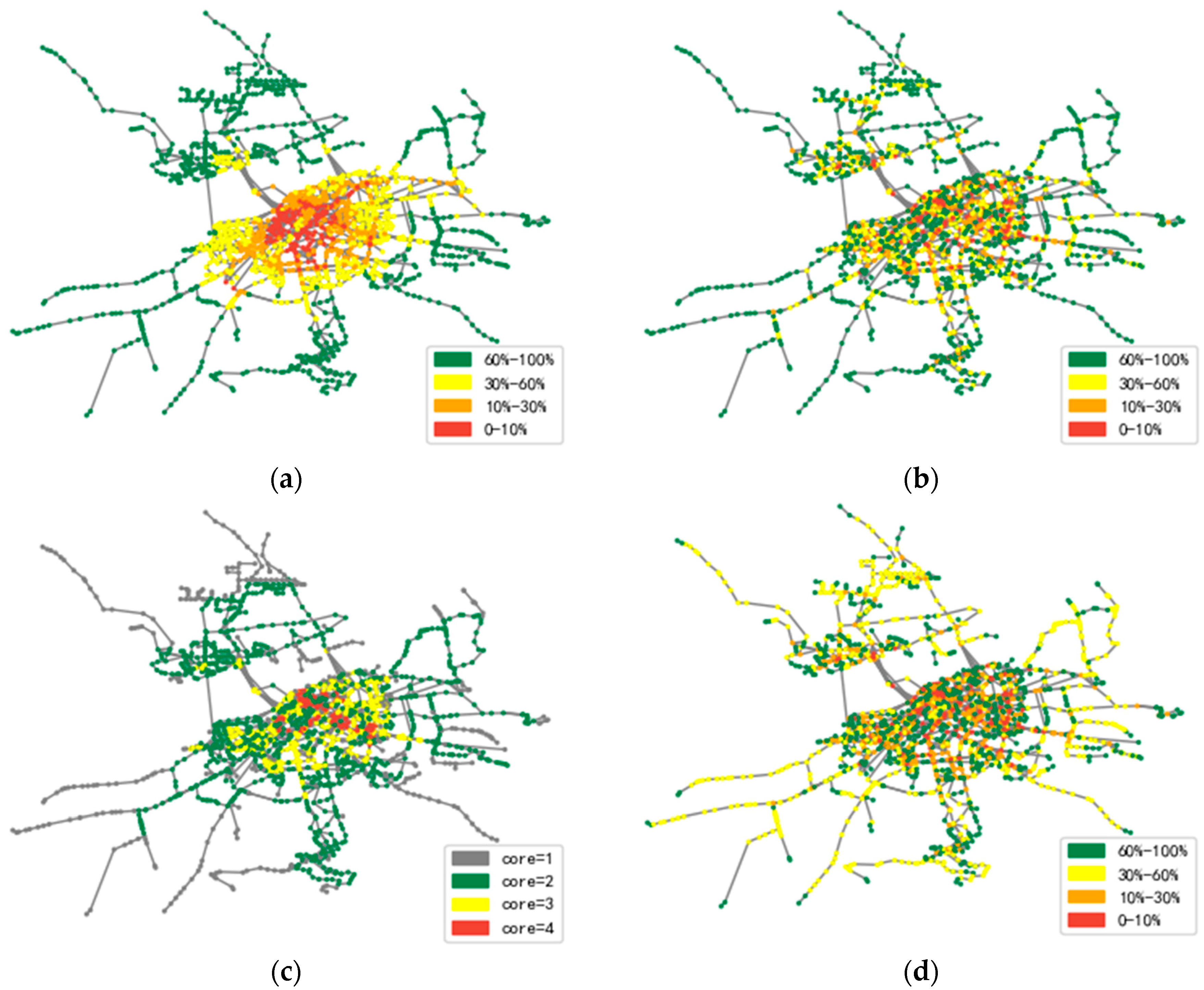
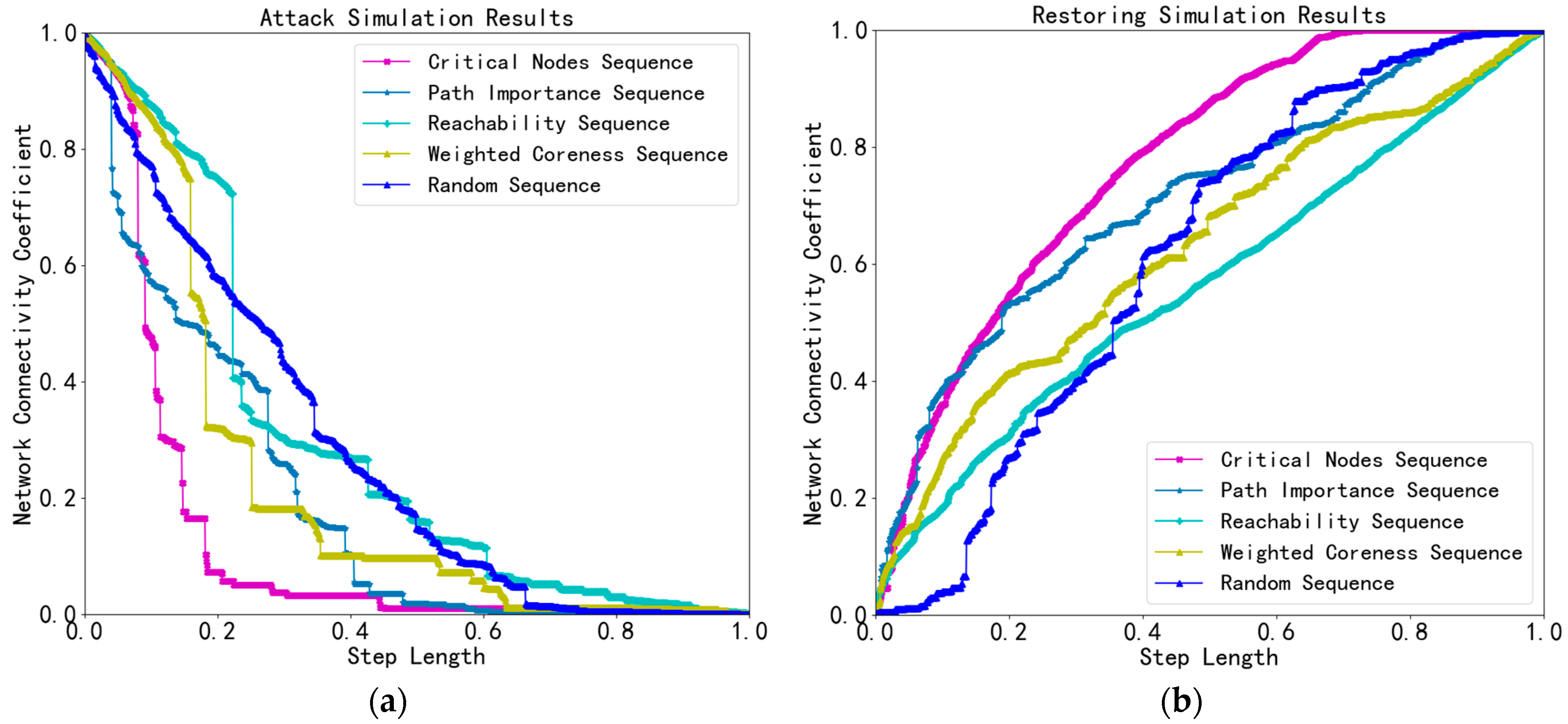
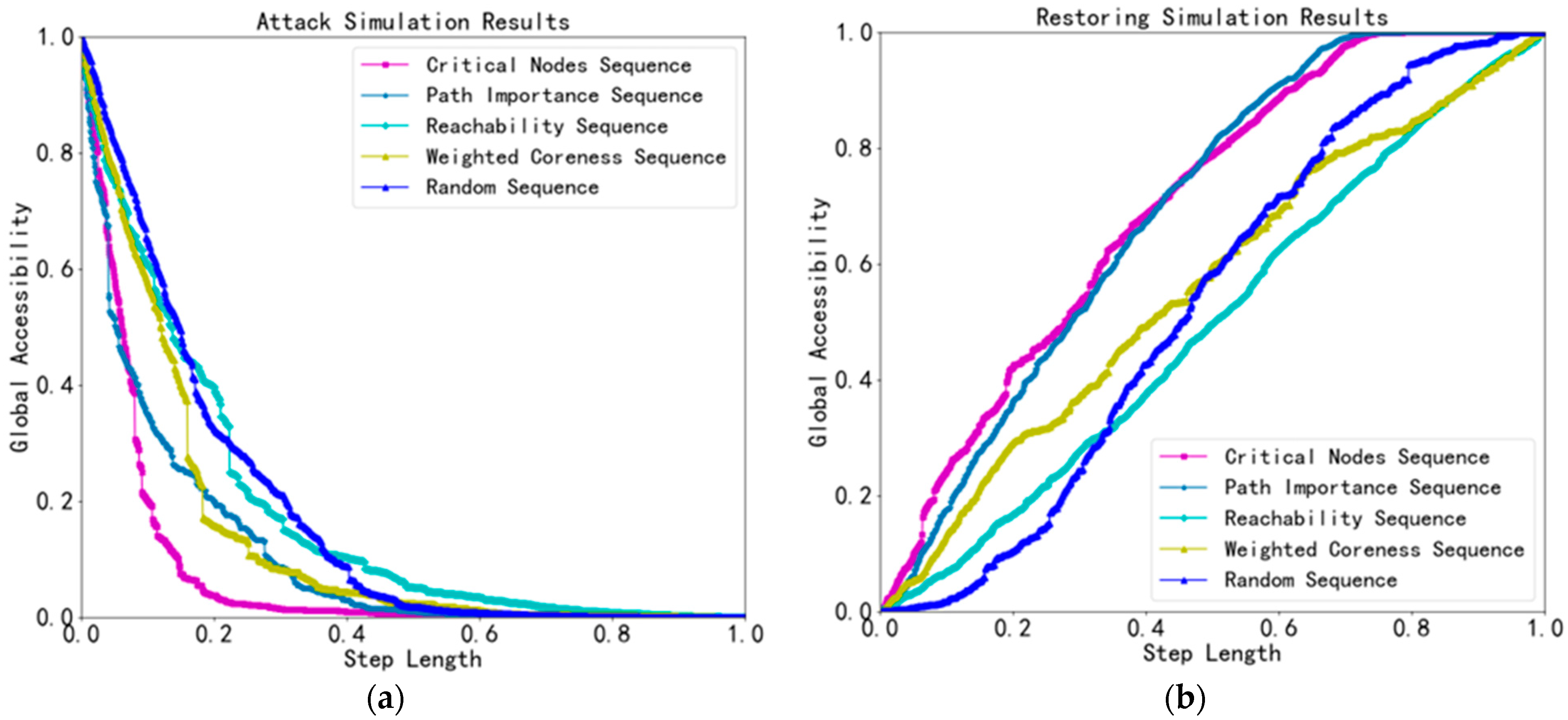
| Symbol | Description |
|---|---|
| The generalized cost of passing through station segment i. | |
| The departure interval of the line to which station segment i belongs. | |
| The generalized cost of a bus or subway vehicle passing through station segment i. | |
| The monetary cost of passing through station segment i. | |
| The time cost of passing through station segment i. | |
| The comfort cost of the passengers passing through station segment i. | |
| The environmental cost. | |
| The operating monetary cost coefficient, = 0.25. | |
| The actual length of station section i. | |
| The travel time value coefficient, = 0.31. | |
| The actual time to pass through station segment i. | |
| The crowding value coefficient, = 0.245. | |
| The average number of passengers in a vehicle. | |
| The rated passenger capacity of a vehicle. | |
| The carbon trading value coefficient, = 0.06. | |
| The carbon emissions from the electricity consumed per kilometer. | |
| The cost of passing through transfer section j. | |
| The number of passengers who need to transfer. | |
| The time to walk through transfer section j. | |
| The walking time value coefficient, = 0.31. | |
| The node number. | |
| The node reachability. | |
| The generalized cost of the shortest path from node i to node j. | |
| Whether node i is connected to node j. If node i is connected to node j, then = 1; otherwise, = 0. | |
| The path importance. | |
| The number of shortest paths between node s and node t. | |
| The number of nodes that the shortest path between node s and node t passes through, . | |
| The total number of nodes. | |
| The node degree centrality. | |
| The node degree value. | |
| The local strength of the node. | |
| The generalized cost between node i and its adjacent nodes. | |
| The information entropy value of the j-th indicator. | |
| The weight of the j-th indicator. | |
| The amount of information contained in the j-th indicator. | |
| The standard deviation of the j-th indicator. | |
| The information entropy of the j-th indicator. | |
| The correlation coefficient between indicator t and j. | |
| / | The positive ideal solution and the negative ideal solution. |
| / | The Euclidean distance of each node to the positive ideal and the negative ideal solution. |
| The relative progress of each node. | |
| The network resilience at time t. | |
| The network resilience measurement index. | |
| The initial time when the network is disturbed. | |
| The number of subnetworks. | |
| The number of nodes contained in the i-th connected subgraph. | |
| The number of nodes contained in the largest connected subgraph of the initial network. | |
| The global reachability. |
| Line Number | Type | Departure Interval (min) | Rated Passenger Capacity | Average Passenger Capacity |
|---|---|---|---|---|
| 0001 | Bus | 3.75 | 86 | 46 |
| 0002 | Bus | 7.5 | 86 | 54 |
| … | … | … | … | |
| 1001 | Subway | 3.83 | 1460 | 724 |
| 1002 | Subway | 4.97 | 1460 | 588 |
| Previous Station (Coordinates) | Next Station (Coordinates) | Distance (m) | Time (min) | Comfort Cost | Environmental Cost | Generalized Cost |
|---|---|---|---|---|---|---|
| Grand Skylight Community (126.694505, 45.697257) | Linji Community (126.68852, 45.702617) | 752 | 2.59 | 0.109 | 0.036 | 1.090 |
| Linji Community (126.68852, 45.702617) | Haci Group (126.684628, 45.705962) | 479 | 2.08 | 0.109 | 0.023 | 0.944 |
| … | … | … | … | … | ||
| Harbin West Railway Station (126.5792, 45.706279) | Chengrong Road (126.567547, 45.712029) | 1120 | 2 | 0.082 | 0.099 | 1.084 |
| Chengrong Road (126.567547, 45.712029) | Gongnong Street (126.558642, 45.718798) | 1004 | 2 | 0.082 | 0.089 | 1.044 |
| Network Indicators | Bus Network | Bus–Subway Network | Bus–Subway Network Changes Compared to Bus Network |
|---|---|---|---|
| Number of nodes | 1827 | 1892 | 3.56% |
| Number of edges | 2860 | 3201 | 11.92% |
| Maximum connected subgraph | 1827 | 1892 | 3.56% |
| Weighted network efficiency | 0.04000 | 0.04214 | 5.26% |
| Indicator | Top-20 Nodes Sequence |
|---|---|
| Weighted coreness | 37, 1841, 77, 1538, 40, 625, 39, 114, 244, 1842, 38, 1859, 282, 1877, 355, 486, 571, 1834, 1119, 611 |
| Path importance | 46, 226, 37, 391, 1877, 40, 74, 185, 327, 1859, 86, 192, 244, 353, 383, 752, 1842, 7, 84, 96 |
| Reachability | 38, 1839, 47, 133, 1180, 37, 1840, 1842, 39, 1841, 1838, 40, 41, 1642, 1843, 77, 365, 48, 78, 239 |
| Critical node | 37, 40, 1842, 244, 77, 1841, 38, 1859, 1877, 41, 114, 39, 48, 383, 46, 981, 85, 188, 752, 316 |
| Network Indicator | Network Connectivity Coefficient | Global Accessibility | |||||
|---|---|---|---|---|---|---|---|
| Sequence | Attack Process | Recovery Process | Resilience | Attack Process | Recovery Process | Resilience | |
| Critical nodes | 0.12282 | 0.77231 | 0.447565 | 0.07330 | 0.70195 | 0.387625 | |
| Reachability | 0.29369 | 0.56716 | 0.430425 | 0.17669 | 0.49771 | 0.337200 | |
| Path importance | 0.19056 | 0.71096 | 0.450760 | 0.10673 | 0.6932 | 0.399965 | |
| Weighted coreness | 0.22033 | 0.67278 | 0.446555 | 0.13802 | 0.56305 | 0.350535 | |
| Random | 0.25497 | 0.63326 | 0.444116 | 0.17759 | 0.53537 | 0.356480 | |
| Network Indicator | Network Connectivity Coefficient | Global Accessibility | |||||
|---|---|---|---|---|---|---|---|
| Sequence | Bus Network | Bus–Subway Network | Percentage | Bus Network | Bus–Subway Network | Percentage | |
| Critical nodes | 0.4342 | 0.4476 | 2.99% | 0.3764 | 0.3876 | 2.98% | |
| Reachability | 0.4193 | 0.4304 | 2.58% | 0.3333 | 0.3372 | 1.17% | |
| Path importance | 0.4349 | 0.4508 | 3.53% | 0.3879 | 0.4000 | 3.12% | |
| Weighted coreness | 0.4345 | 0.4466 | 2.71% | 0.3471 | 0.3505 | 0.98% | |
| Random | 0.4273 | 0.4441 | 3.78% | 0.34298 | 0.3565 | 3.94% | |
Disclaimer/Publisher’s Note: The statements, opinions and data contained in all publications are solely those of the individual author(s) and contributor(s) and not of MDPI and/or the editor(s). MDPI and/or the editor(s) disclaim responsibility for any injury to people or property resulting from any ideas, methods, instructions or products referred to in the content. |
© 2024 by the authors. Licensee MDPI, Basel, Switzerland. This article is an open access article distributed under the terms and conditions of the Creative Commons Attribution (CC BY) license (https://creativecommons.org/licenses/by/4.0/).
Share and Cite
Pei, Y.; Xie, F.; Wang, Z.; Dong, C. Resilience Measurement of Bus–Subway Network Based on Generalized Cost. Mathematics 2024, 12, 2191. https://doi.org/10.3390/math12142191
Pei Y, Xie F, Wang Z, Dong C. Resilience Measurement of Bus–Subway Network Based on Generalized Cost. Mathematics. 2024; 12(14):2191. https://doi.org/10.3390/math12142191
Chicago/Turabian StylePei, Yulong, Fei Xie, Ziqi Wang, and Chuntong Dong. 2024. "Resilience Measurement of Bus–Subway Network Based on Generalized Cost" Mathematics 12, no. 14: 2191. https://doi.org/10.3390/math12142191
APA StylePei, Y., Xie, F., Wang, Z., & Dong, C. (2024). Resilience Measurement of Bus–Subway Network Based on Generalized Cost. Mathematics, 12(14), 2191. https://doi.org/10.3390/math12142191







